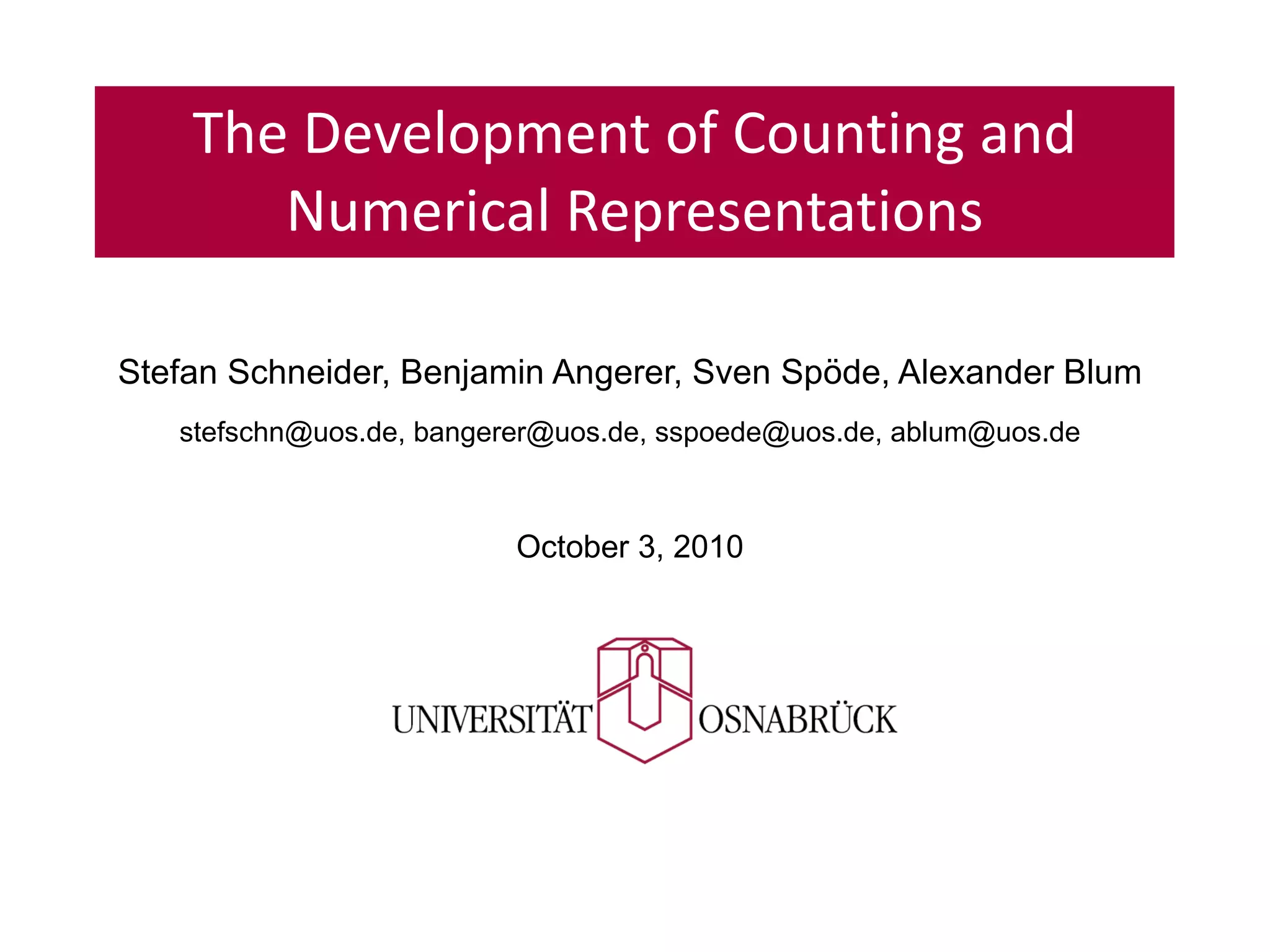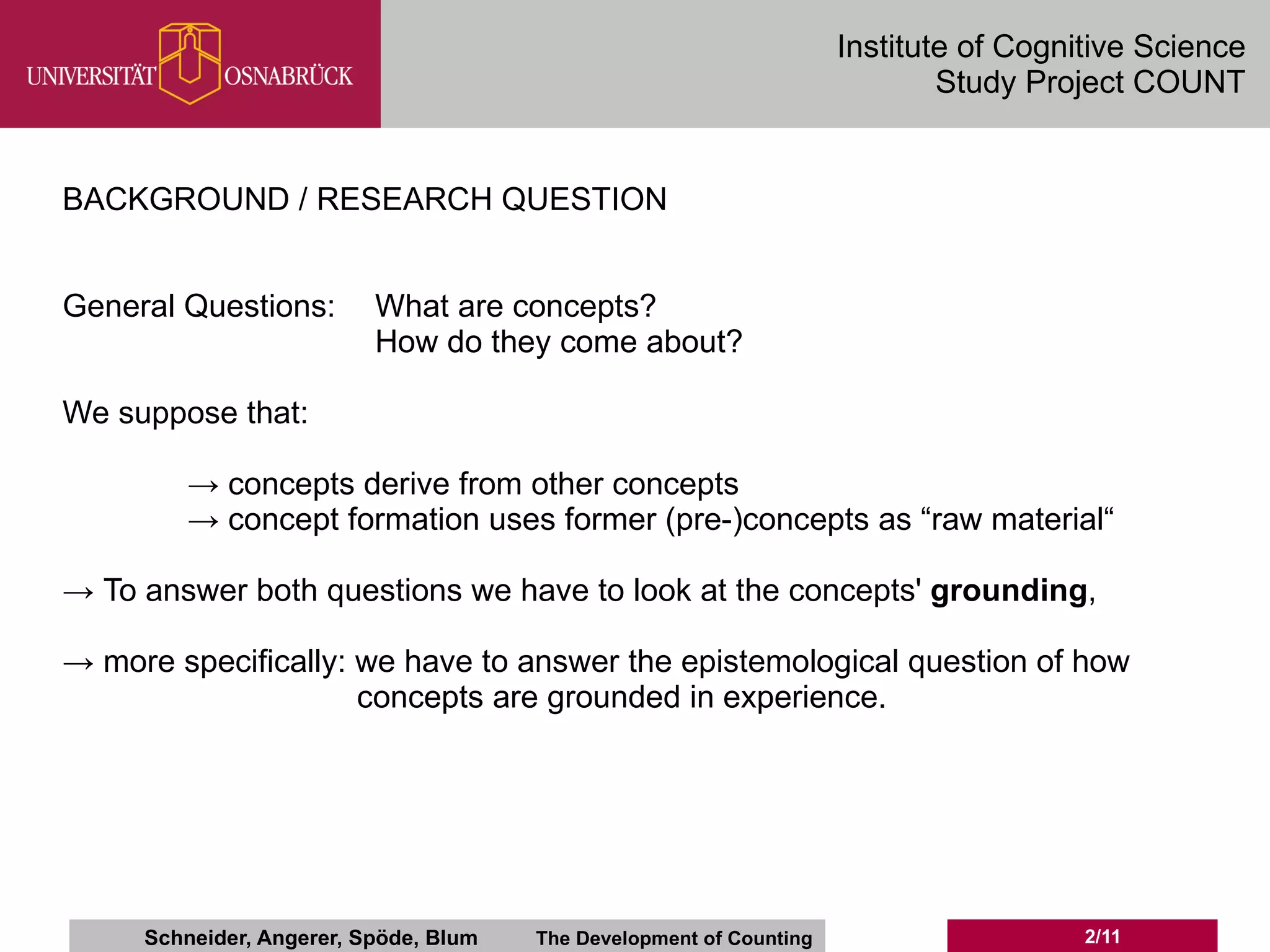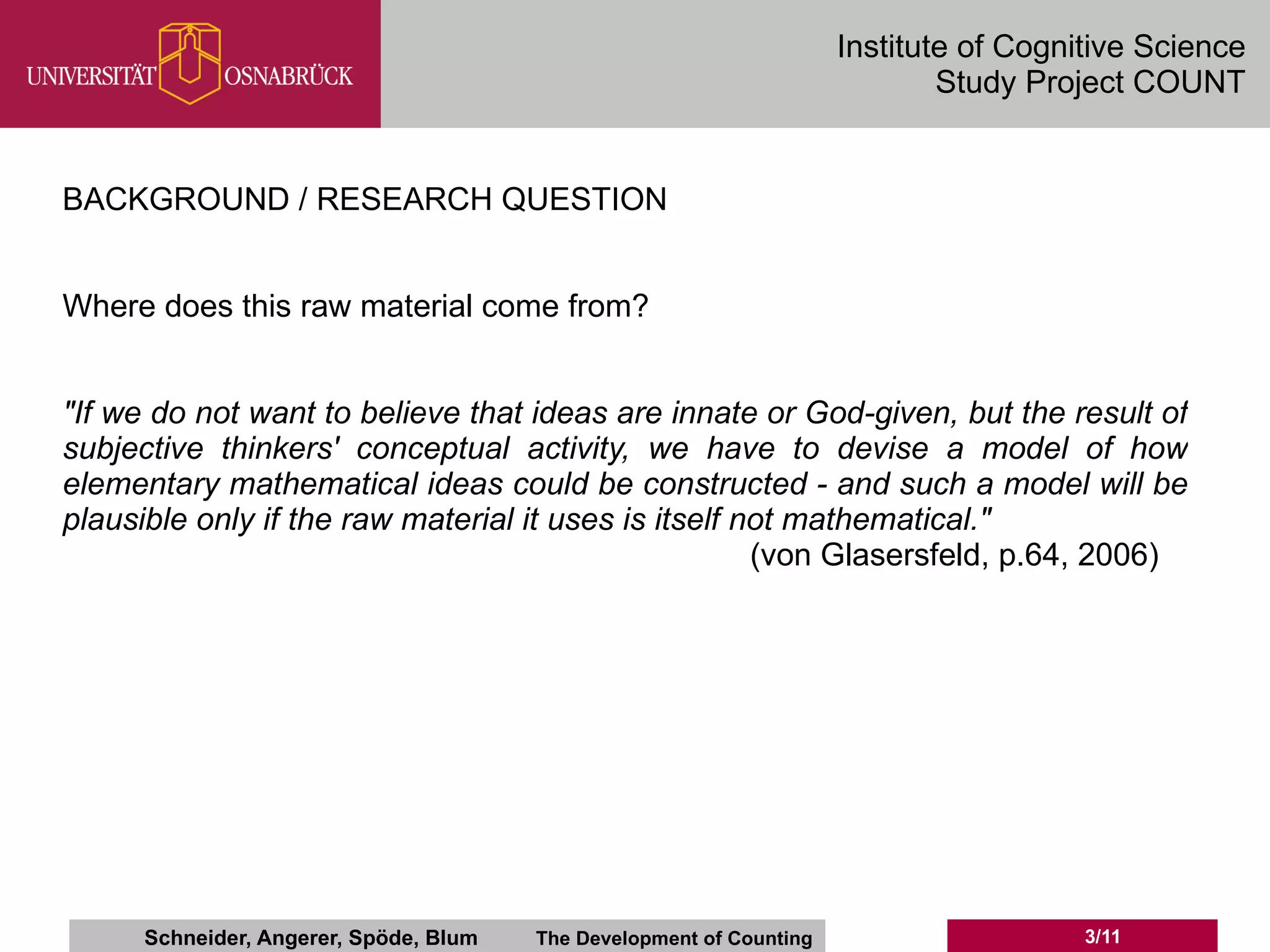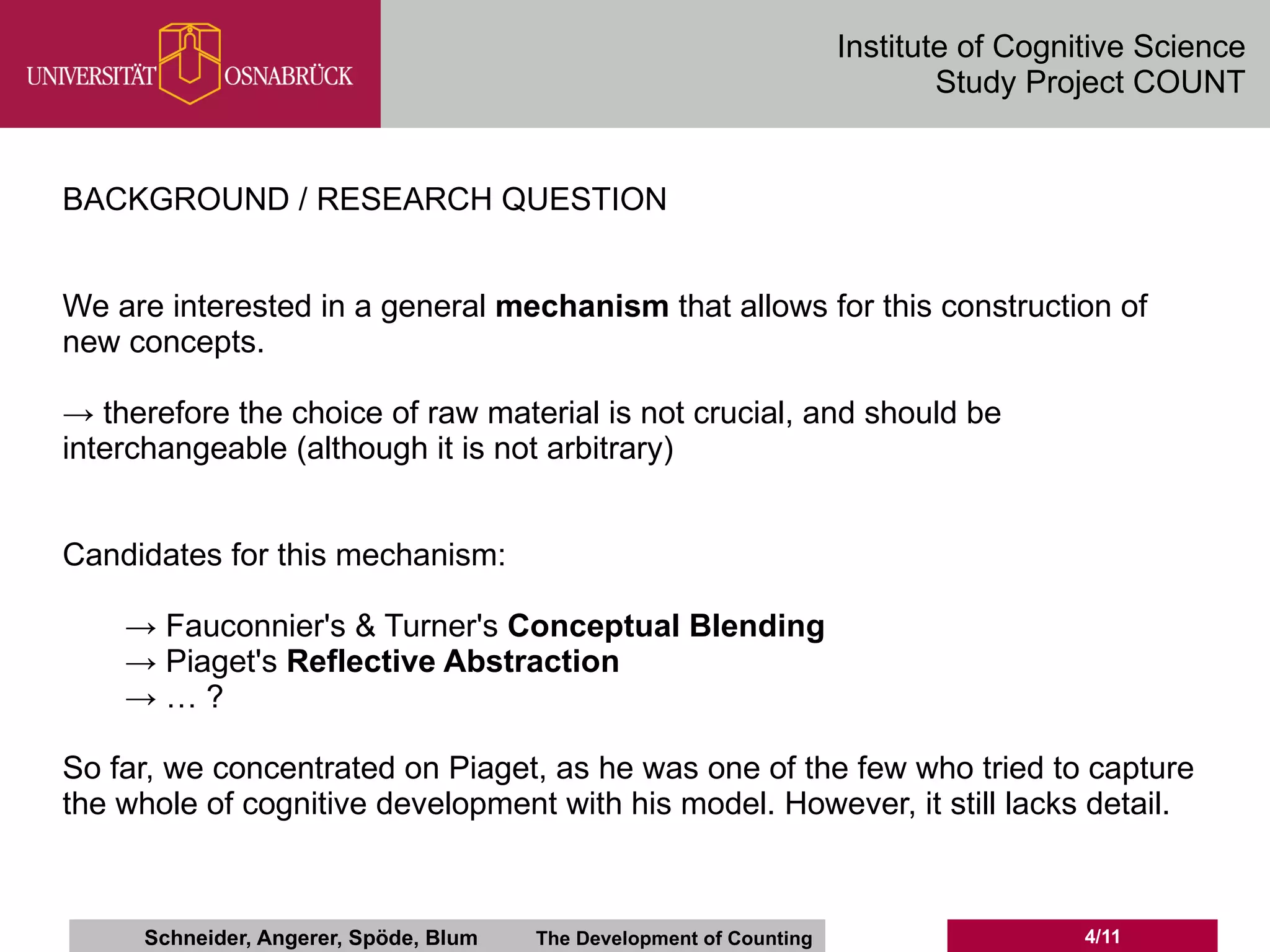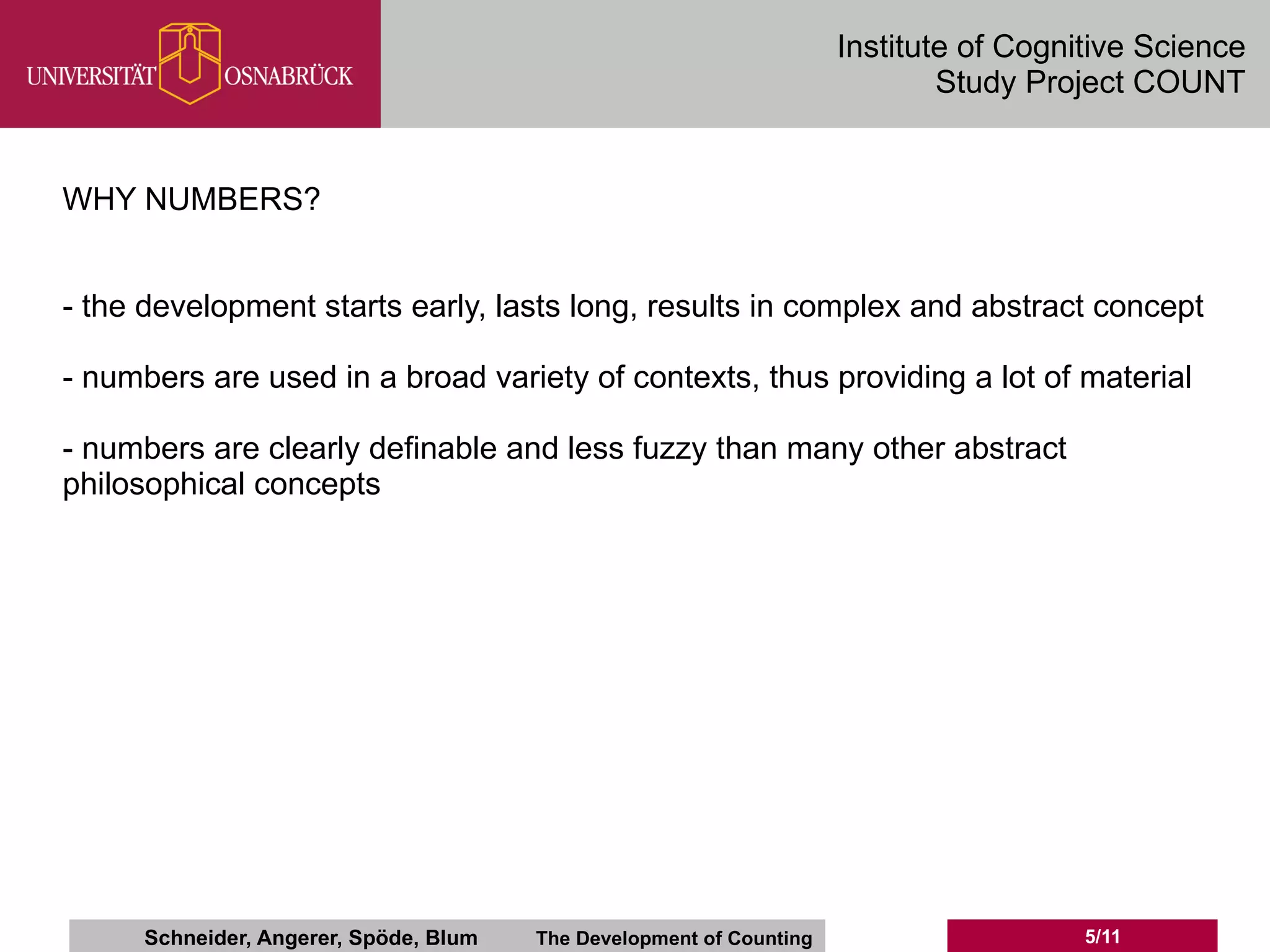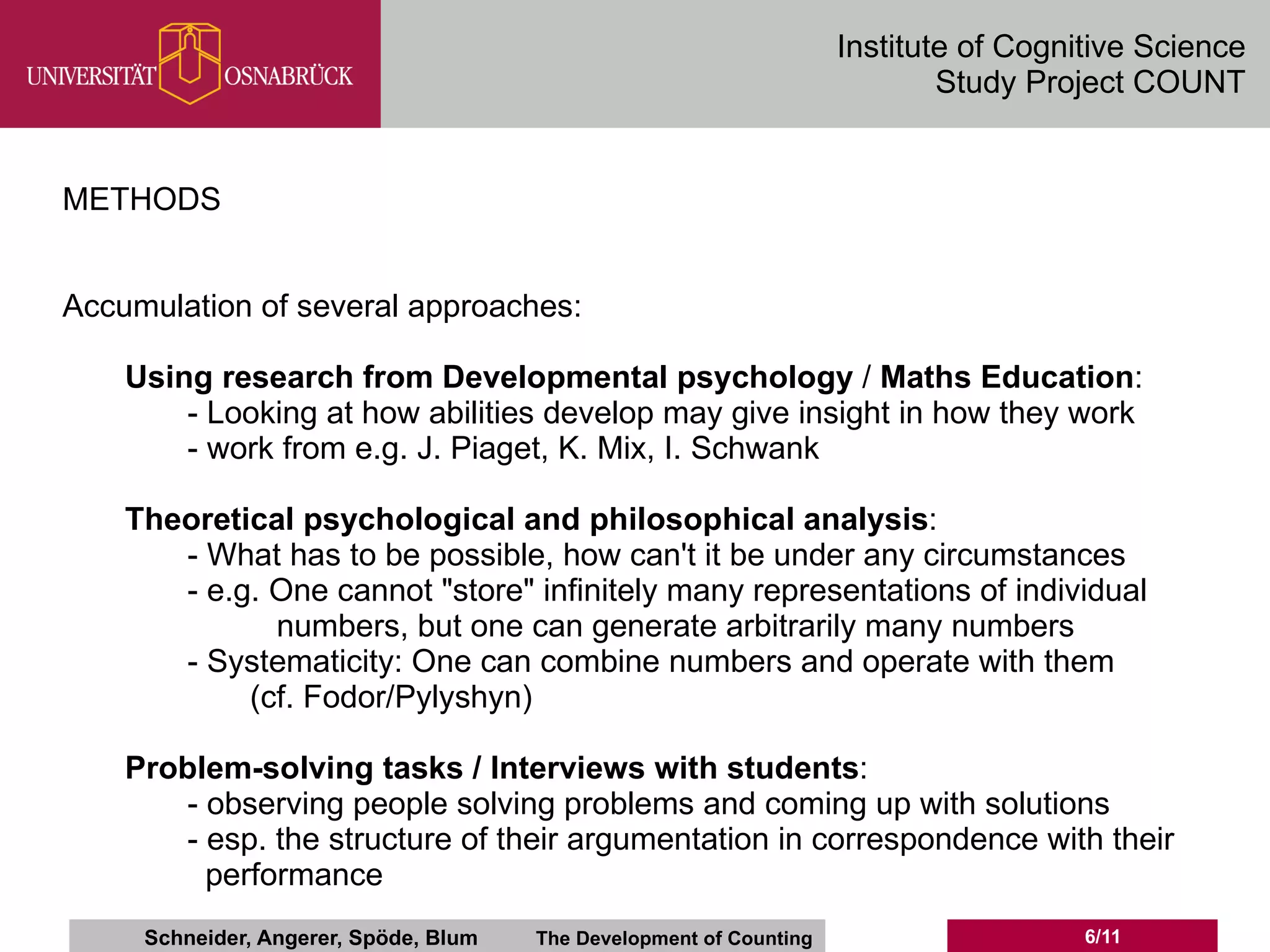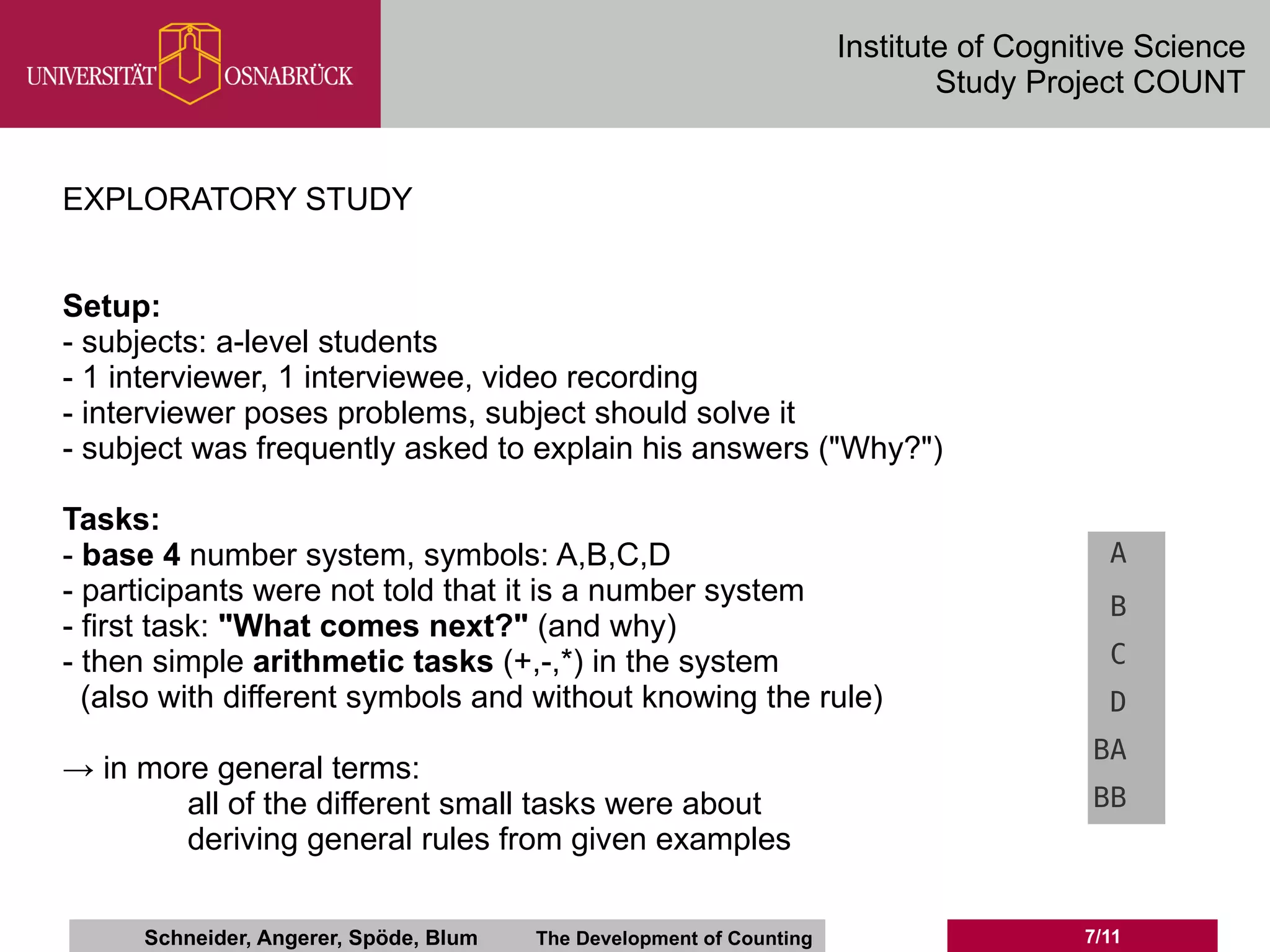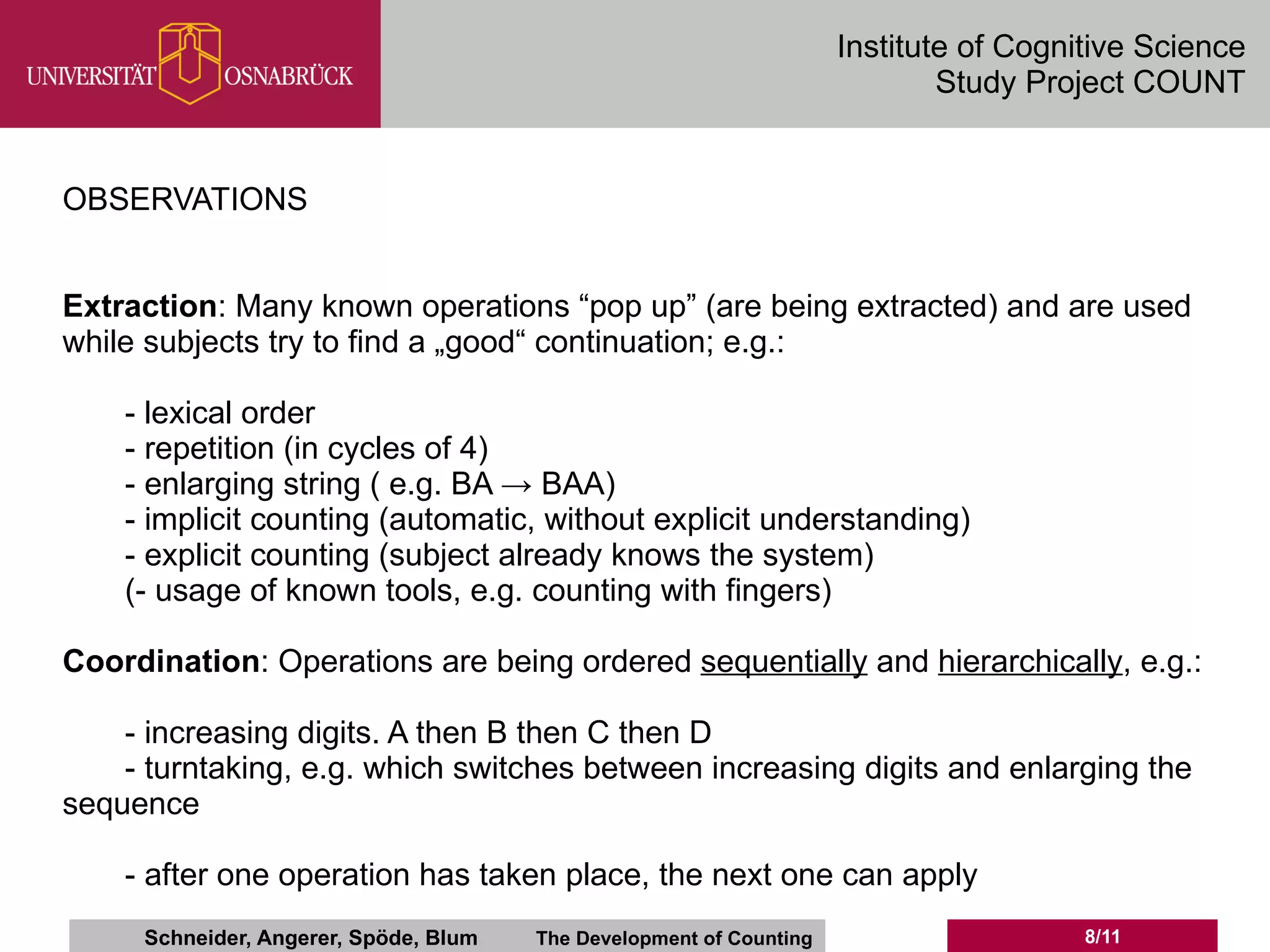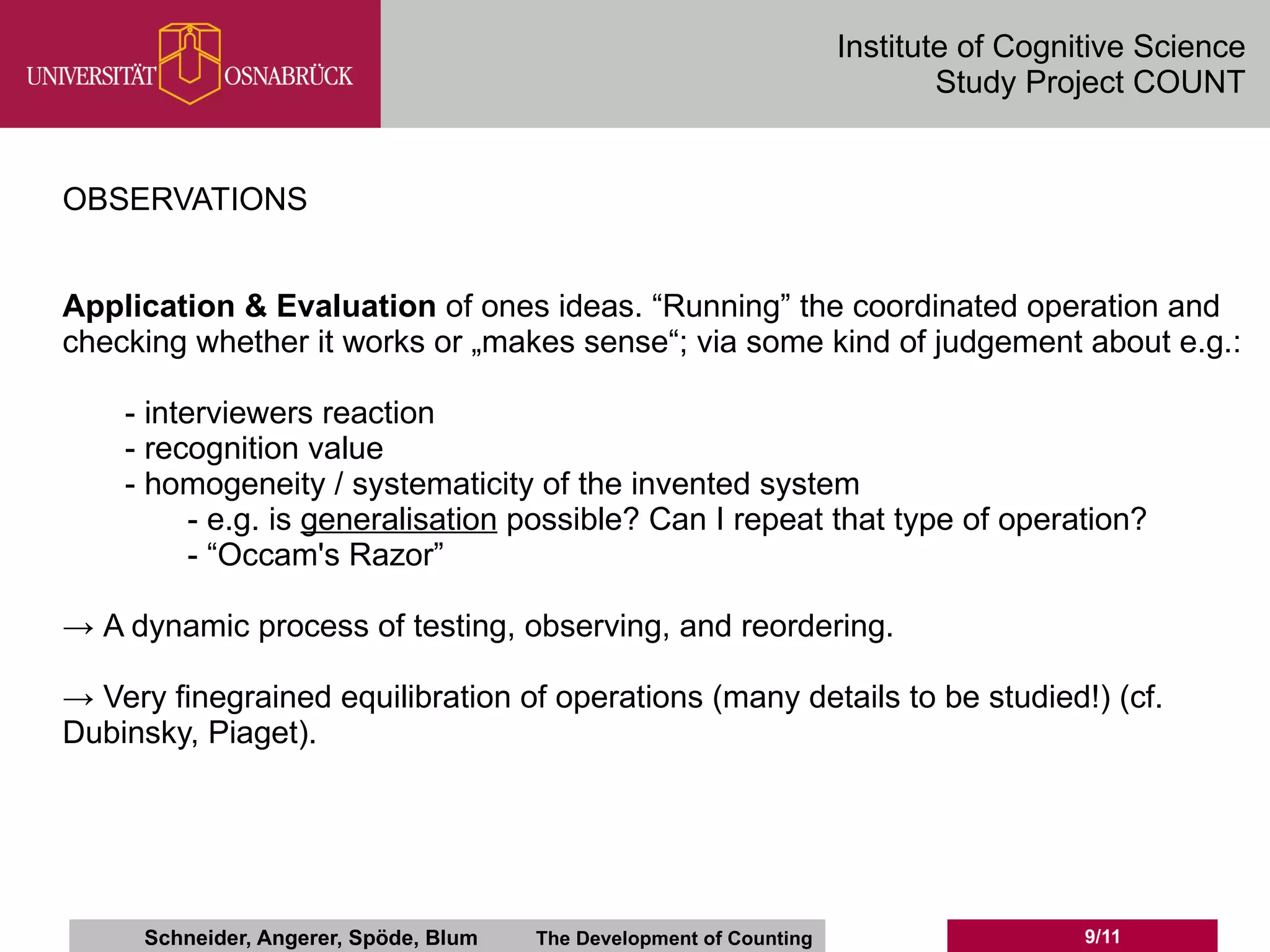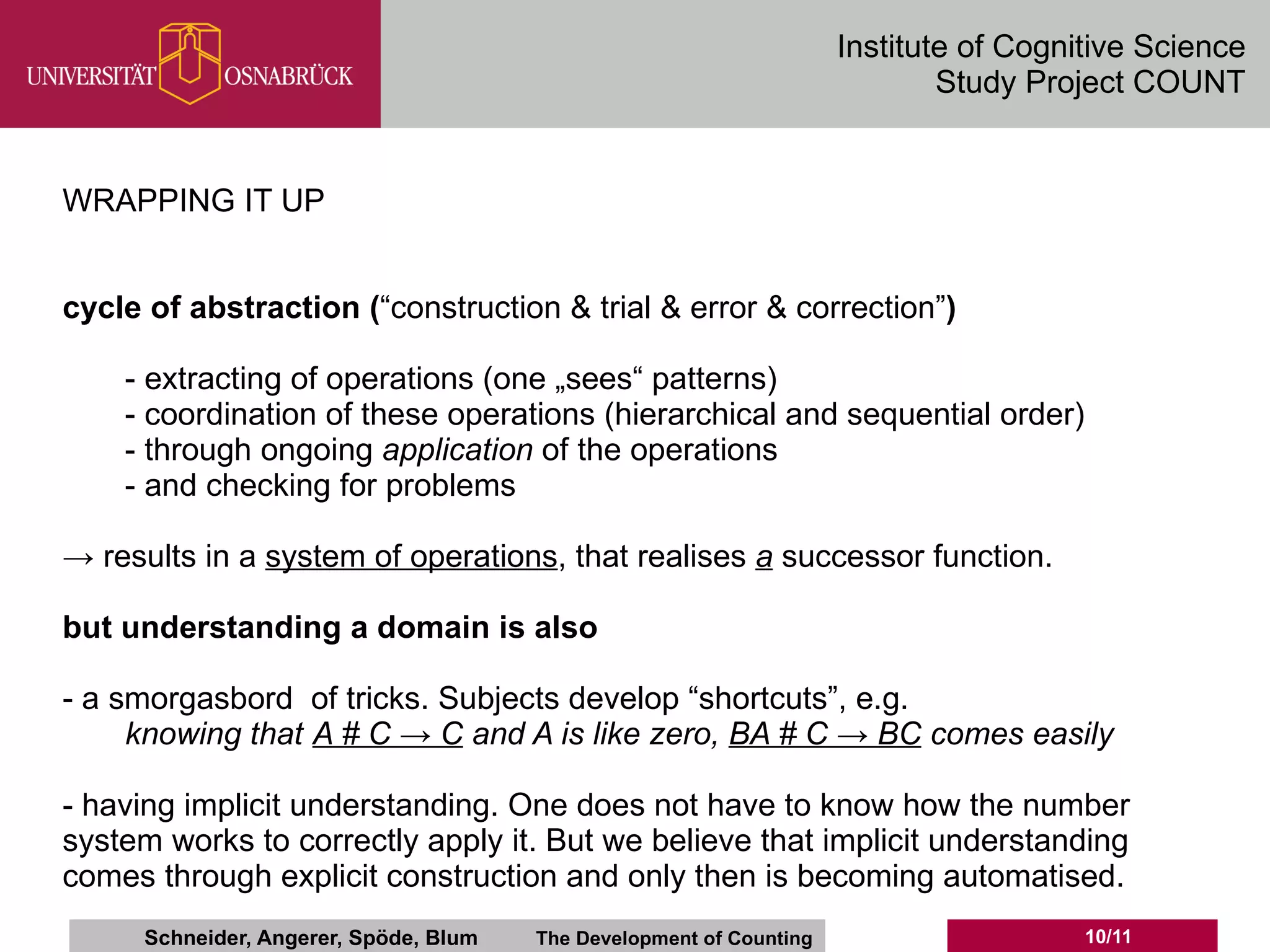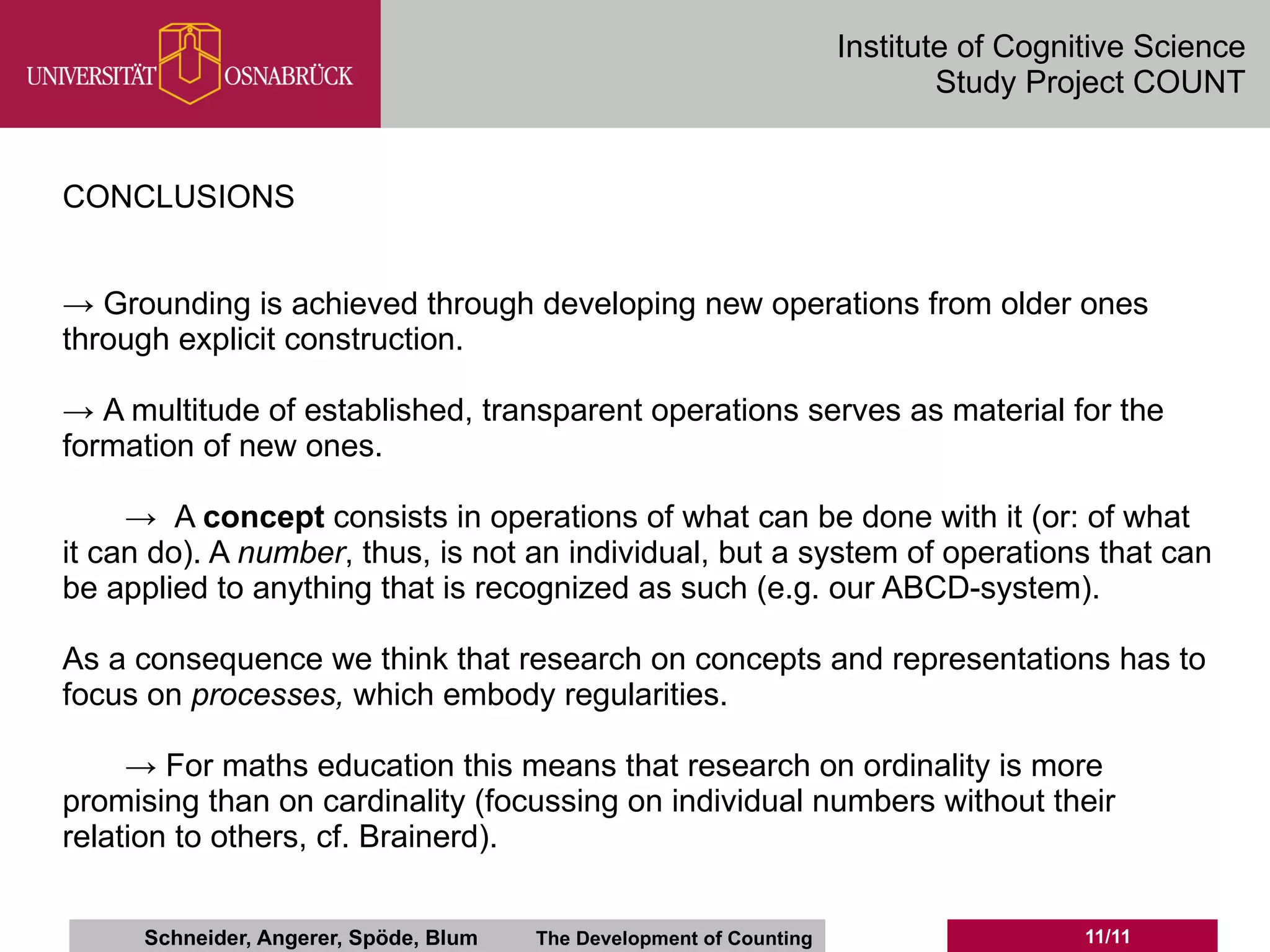The document discusses research into how numerical concepts and representations develop. It proposes that new concepts are formed through extracting operations from existing concepts, coordinating those operations, and applying and evaluating them through a process of trial and error. An exploratory study found that participants used known operations like counting and arithmetic to develop a system of representations for a fictional base-4 number system. The document concludes that conceptual understanding is grounded through explicitly constructing new operations from older ones.
